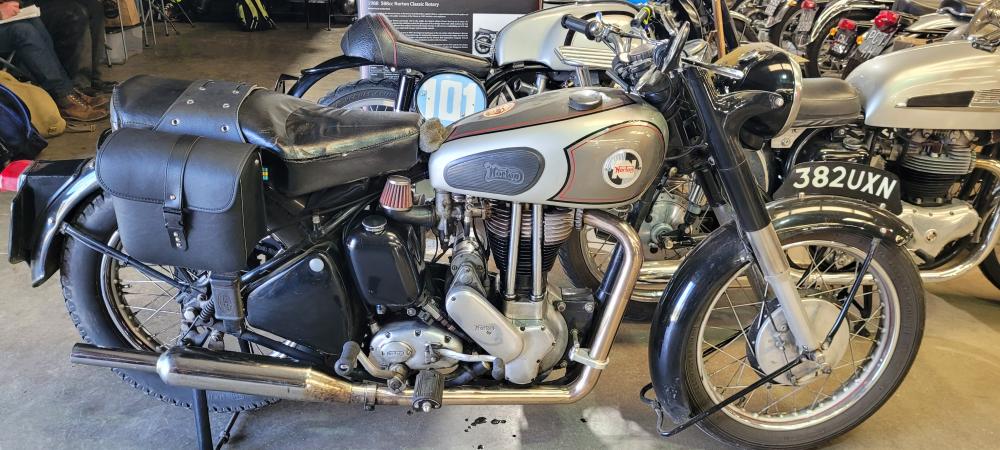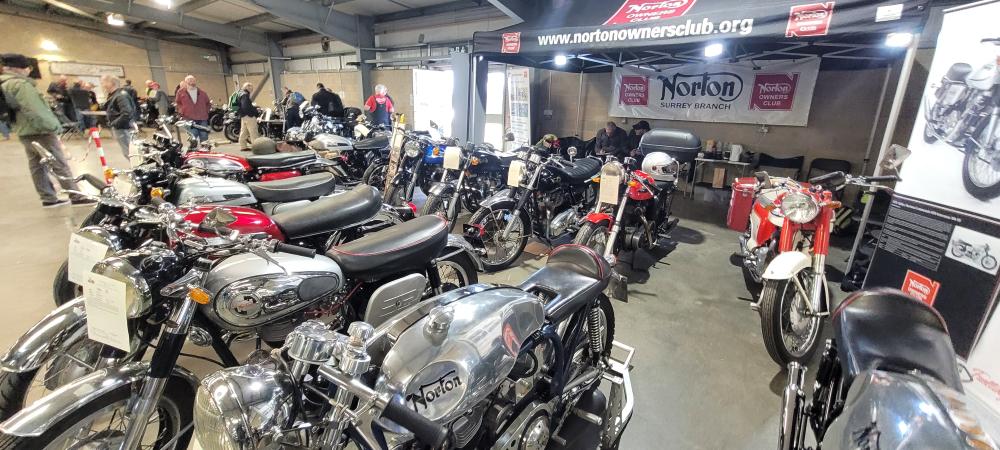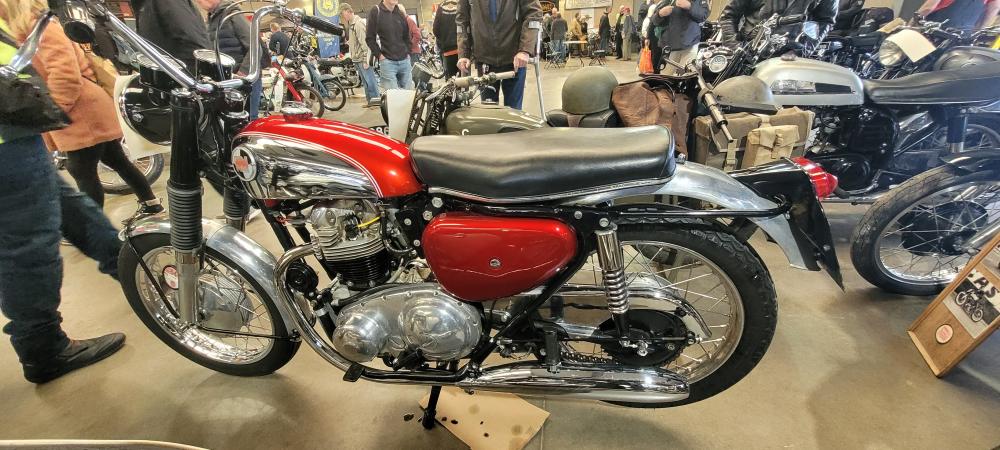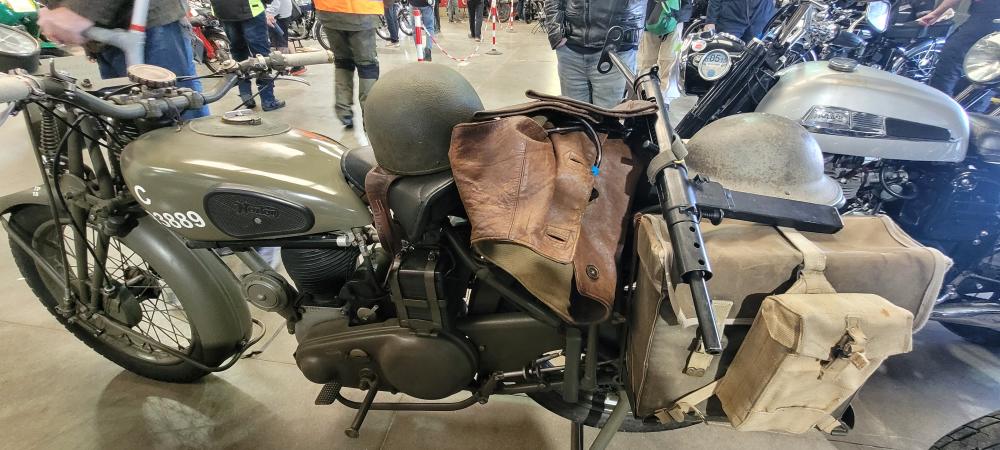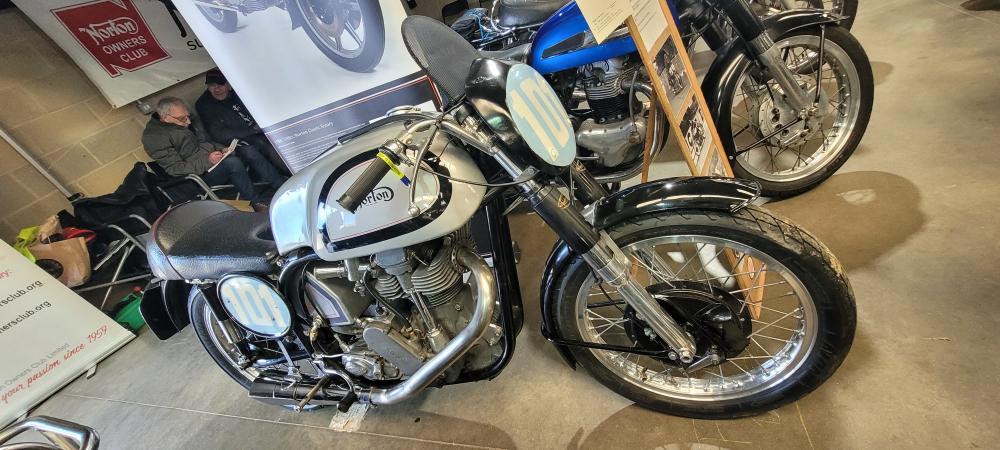A review of correspondence from NOC-L
What is the best type of battery for use on a Norton?
A comparison of battery types
Lead Acid
The larger sealed lead acid type batteries such as the Yuasa range do have a vent which blows on overpressure. The electrolyte's ability to flow inside the battery is restricted mechanically, meaning that these batteries can be mounted at any angle without problems. They are however really designed for lower current/standby applications and will probably not tolerate the very crude charging systems found on motorcycles. They require a constant voltage supply of 2.3V per cell (= 13.8V for a 12V pack) although they will take 2.5V per cell (total 15V) as long as the charging current does not exceed 0.25 x capacity. For example, a 6Ah battery could only be charged at 1.5A maximum, rather less than even the poorest of the alternators we recently heard about will provide. They also cost about 1.5 to 1.75 times more than a conventional motorcycle battery.
An even more advanced type with gelled electrolyte gives rather higher charge/discharge capacities but these are yet more expensive - ca. 3 x normal and they require a very smooth charging current indeed; rather different to what goes on inside the average Norton. Lastly, the fully sealed types such as the Cyclon, which have been advertised in the motorcycling press in the UK, are much more rugged and will take a degree of electronic abuse. Unfortunately, these come only in single cell cylindrical packs and you have to connect 6 of them together to get the voltage needed. It's an expensive route for little gain.
Nickel-Cadmium (NiCads)
This type of cell is the most commonly found rechargeable one. They usually come as single units giving just 1.2V each instead of the 2V from a lead acid type. So, to get 12V, you need to connect 10 of them together. On the up side, they have a rather more friendly discharge characteristic in that whereas the voltage from a lead acid battery will just drop in a roughly linear fashion as it discharges, a healthy NiCad cell will hold its voltage towards maximum until it reaches about 85 to 90% discharge, at which point it crashes rapidly. Charge rates on the larger types can be 0.1 x capacity and charging must be constant current. This means that you cannot dump electricity back into a well discharged battery at a high rate as you can with the conventional vehicle battery.
They also exhibit a memory effect which means that their life is reduced if they are exposed to constant mid- charge cycling such as they might find in a vehicle application; they prefer deep discharge to full charge cycles. There is a solution which involves shocking the offending hydroxide crystals out of the plates with a several millisecond burst of a couple of thousand volts. It requires some diagnostic equipment and sounds like a good way to put the garage into orbit; don't try this one at home, folks!
There are ready made packs available, typically of 7.2V for remote controlled toys and model aircraft; there may be 12V ones around. The best way to obtain the larger NiCads is to get hold of those that the British army throw out of their equipment at regular intervals; they very kindly replace them long before their useful life has expired.
Nickel Metal Hydride (NiMH)
The best option in terms of overall characteristics lies for the present with this type of battery. These are the ones found in laptop PCs and the individual cells are now on the market. They have a similar voltage output to NiCads but up to twice the charge density, i.e. twice the power in a battery of the same dimensions. In addition, the charge memory effect is lacking in NiMHs. On the down side, they are less tolerant to overcharging, when they get hot and damaged and of course, being fairly recent technology, they are not cheap. There may be some 12V packs out there somewhere for computers or their peripherals, but with chips now working at ever lower voltages, probably not; so, it would have to be the single cell route again.
I think the conclusion here is that you could replace the existing item with any of these types and probably save some weight and space. However, in all cases you would have to be prepared to modify the rectifier/zener charging setup and the costs would be rather higher than staying with the standard set up.
Chris Grimmett (cmg@goostrey.demon.co.uk) on NOC-L 31st. Jan 1998
Cyclon 2V cells
I have used sealed lead acid batteries on my other bike ( a 1953 Sunbeam S7 ) for about three years now with absolute sucess. I have never had the battery go flat and have just ignored it for the winter layup time and it has been as good as new.
The batteries I used are from an electronics / electrical company in the UK and are made by Cyclon. They are 2 volt ones and I connected 3 in series for my 6 volt system, obviously you would need 6 for a 12 volt bike. Mine are 5Ah ones and are approx 45mm dia x 80mm high with two push on connections at the top. I tied mine together with cable ties and fixed them in the existing battery box with foam round them. They have never been out again and are projected to last at least 10 years which makes up for the cost of approx £6.00 + tax each. As an aside, the data sheet says the maximum discharge is ~ 500A so you could probably start a Commando on them, if it starts that way at all!
They can be mounted any way round, so you can stack them to suit the battery box / carrier arrangement; just watch the terminals touching things though as they are extremely powerful for their size and could easily cause a fire if shorted out.
If anyone is interested and wants more details, please email me direct and I will send a scan of the catalogue info.
Angelo (rubberboy@dial.pipex.com) on NOC-L 31st. Jan 1998
A good argument for using cheaper batteries
On the subject of batteries, I have had a couple of incidents where more costly and denser plated batteries are not better. Twice I had expensive motorcycle batteries short out due to the plates being too close to each other. The vibration of vintage bikes may not be very good for the best and most expensive types.
So, getting sick and tired of forking out $40 twice in one season, I went to Sam's Club and got their cheapest motorcycle lead acid battery; $16.95 with core (about $20 without). It works fine with my Boyer system, and has done so for two seasons, which is not bad for a cheap one.
Maybe this is because the battery has less plates in the same sized package, so there is more space between them, and thus less of a chance for our 'snortin Nortons' to vibrate the plates together causing battery shorts. I say when it comes to batteries -- cheaper is better.
Steven Schoner (dm550@cleveland.freenet.edu) on NOC-L 1st. Feb 1998
Gel electrolyte batteries
You can now get gel cell batteries from Yuasa. They are currently being used in GSXR Suzukis, where the battery lays at a 45 degree angle, and a lot of ATV's (they bounce around a lot). You fill the battery, let it sit for about ½ hour, put it on the battery charger to fully charge it, then place it in the motorcycle or ATV any way you want, even upside down. There is no leakage and it is compatible with your current charging system. One additional thing, these batteries seem to put out more power for their size; the GSXRs use a 9Ah or 11Ah battery and they have no problem starting a high compression 750cc motor.
John Mead () on NOC-L 2nd. Feb 1998

